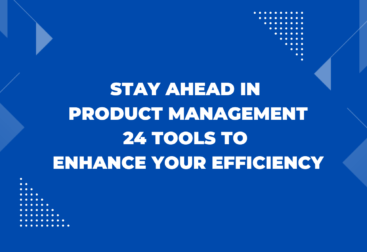Product managers are pivotal figures in the lifecycle of a product, orchestrating its development from inception to market success. Their ability to measure success and ensure that the product is meeting user needs hinges on a robust understanding and application of product metrics. These metrics provide a quantifiable basis for assessing various aspects of a product’s performance, guiding decisions and shaping strategies. Let’s explore how product managers utilize these metrics to gauge success and drive product evolution.
Understanding Product Metrics
Product metrics are quantitative measures used to track and evaluate the performance, quality, and user engagement of a product. They serve as indicators that help product managers understand how well a product is performing in the market, how users are interacting with it, and whether it meets the business objectives and user expectations.
There are several types of product metrics, each serving a distinct purpose:
- Business Metrics: These include revenue, profit margins, and cost-related metrics. They help product managers assess the financial viability of a product.
- User Engagement Metrics: These metrics, such as active users, session duration, and user retention rates, provide insights into how users interact with the product.
- Quality Metrics: These measure the product’s performance in terms of reliability and user satisfaction. Metrics such as crash rates, bug reports, and Net Promoter Score (NPS) fall under this category.
- Acquisition Metrics: These metrics track how users find and start using the product, including metrics like the number of new users, acquisition cost, and conversion rates.
- Growth Metrics: These encompass measures like user growth rate, market share, and the rate of adoption for new features.
Key Product Metrics for Measuring Success
To determine whether a product is on the right track, product managers rely on a combination of these metrics. Let’s delve into some key metrics that are critical for measuring product success:
- Customer Satisfaction (CSAT) and Net Promoter Score (NPS): CSAT gauges customer satisfaction through surveys that ask users to rate their experience with the product. NPS measures the likelihood of customers recommending the product to others. A high NPS indicates strong user loyalty and satisfaction.
- Monthly Active Users (MAU) and Daily Active Users (DAU): These metrics track the number of unique users engaging with the product on a monthly and daily basis, respectively. They provide a clear picture of user engagement and product popularity.
- Retention Rate: This metric measures the percentage of users who continue to use the product over a specific period. High retention rates indicate that users find sustained value in the product.
- Churn Rate: Churn rate is the inverse of retention rate, showing the percentage of users who stop using the product. Monitoring churn helps identify potential issues that cause users to leave.
- Customer Lifetime Value (CLTV or LTV): LTV estimates the total revenue a product can expect from a single user throughout their entire relationship with the product. It helps in understanding the long-term value of users.
- Acquisition Cost (CAC): CAC measures the cost associated with acquiring a new customer. This metric is crucial for assessing the efficiency of marketing and sales strategies.
- Feature Usage: This metric tracks how often specific features of the product are used. It helps product managers understand which features are most valuable to users and which ones might need improvement or removal.
Implementing Product Metrics
Implementing product metrics involves several steps, from defining the right metrics to setting up data collection mechanisms and analyzing the results. Here’s how product managers can effectively implement and utilize product metrics:
- Define Objectives: The first step is to clearly define the business and product objectives. This helps in selecting the most relevant metrics that align with the goals.
- Choose the Right Metrics: Not all metrics are equally important for every product. Product managers must choose metrics that directly reflect the product’s success and user engagement.
- Set Up Data Collection: Implementing analytics tools and setting up tracking mechanisms is essential for collecting accurate and comprehensive data. Tools like Google Analytics, Mixpanel, and Amplitude are commonly used.
- Analyze and Interpret Data: Data without analysis is meaningless. Product managers need to regularly analyze the data, interpret the results, and draw actionable insights.
- Iterate and Improve: Based on the insights gained from the metrics, product managers should continuously iterate and improve the product. This might involve tweaking features, improving user experience, or modifying marketing strategies.
Case Study: Measuring Success in a Mobile App
Consider a mobile app that provides fitness tracking and workout plans. To measure the success of this app, the product manager might focus on the following metrics:
- User Engagement:
- DAU/MAU Ratio: A high DAU/MAU ratio indicates strong daily engagement.
- Session Duration: Long session durations suggest that users are finding value in the app’s features.
- Customer Satisfaction:
- NPS: A high NPS would indicate that users are satisfied and willing to recommend the app.
- App Store Ratings and Reviews: These provide qualitative insights into user satisfaction and areas for improvement.
- Retention and Churn:
- Retention Rate: Tracking how many users return to the app week over week or month over month.
- Churn Rate: Identifying when and why users stop using the app.
- Feature Usage:
- Workout Plan Usage: Measuring how many users are actively following workout plans.
- Integration with Wearables: Tracking the usage of features that integrate with wearable devices to understand their popularity.
- Growth Metrics:
- New User Acquisition: Number of new users downloading and registering on the app.
- Market Expansion: Growth in new geographic markets or demographics.
By focusing on these metrics, the product manager can gain a comprehensive understanding of the app’s performance, identify strengths and weaknesses, and make data-driven decisions to enhance the product.
The Final Words
Product metrics are indispensable tools for product managers. They provide the data needed to assess a product’s success, understand user needs, and drive continuous improvement. By carefully selecting and analyzing the right metrics, product managers can ensure that their products not only meet user expectations but also achieve business objectives, leading to sustained market success. The ability to measure and interpret these metrics effectively is what sets successful product managers apart as true masterminds behind the creation and evolution of successful products.











